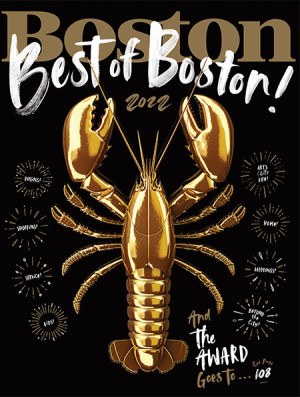True Tales of Murder and Mayhem

Lizzie Borden Took an Ax (1892)
Immortalized in what may be the most disturbing rhyme ever taught to children, the story of Lizzie Borden’s alleged involvement in the ax murders of her father and stepmother has intrigued the nation for more than a century. Borden was charged with the gruesome crime after her parents, Abby and Andrew Borden, were found dead in their Fall River home—their heads bludgeoned to pieces. Borden was later acquitted, but the suspicion of her guilt followed her for the rest of her life. —A.T.

Ponzi’s Scheme (1919)
Before the scandals of TelexFree and Madoff Investment Securities, Charles Ponzi earned his unfortunate claim to fame when his multimillion-dollar fraud operation collapsed in 1920. The Italian immigrant convinced investors to buy international reply coupons for redemption in the States, promising as much as a 100 percent return in just 90 days. To help sell the scam, Ponzi founded the Securities Exchange Company in Boston, drawing in thousands of new investors. A watchdog journalist alerted regulators to Ponzi’s operation, which ended in the collapse of six banks and the loss of about $20 million, or $230 million in today’s dollars. —A.T.

The Bugging of the Underboss
The fashionably dressed threesome looked like late-night revelers in the North End—just two men and a female companion, clutching a bottle of scotch and one another as they weaved across Prince Street on a frigid January night. In fact—while one man had gargled the scotch to put the odor of liquor on his breath—all three were stone-cold sober. Their overcoats concealed bulletproof vests and .38-caliber handguns, and their goal was to pull off a stunt no other FBI agents had ever managed: planting a bug in the Mafia’s nerve center, a location at 98 Prince Street known as “the Office” that had seemed impenetrable. The conviction in law enforcement was that mob boss Gennaro Angiulo had an insurmountable home-court advantage, with loyal eyes and ears all around the old and tightly knit Italian neighborhood.
It was 1981. It would be another 15 years before the public became aware of the FBI’s collusion with gangster Whitey Bulger. Nobody—least of all La Cosa Nostra—knew that Whitey and his sidekick, Stevie Flemmi, were ratting out the Italian mob in exchange for being given free rein to terrorize the region. Most notably, John Morris, an FBI supervisor, and FBI agent John J. Connolly Jr. were at the sordid center of the corruption. As Morris plotted to plant a bug inside Angiulo’s HQ, he claimed Bulger was a key informant. We now know this was just another obfuscation by Morris to keep his favorite thug in the agency’s good graces.
Angiulo, the son of a grocer, had grown up in the North End and risen to underworld power in the 1950s as a master of numbers who knew how to squeeze the most out of the Mafia’s illegal gambling and loan-sharking franchises. He had a few run-ins with police, but came out unscathed, beating the charges brought against him during the 1960s. By the late 1970s he was at the top of his game, deciding when men lived or died, stockpiling millions in ill-gotten gains, and strutting around the city like a Caesar.
For more than a year agents staked out the North End, tracking Angiulo from a mansion in Nahant to his North End office. They leaned on informants, mostly bookmakers. The FBI legwork was painstaking, full of agonizing stops and starts. There were times Angiulo seemed to know their every move. Agents finally assembled the probable cause they needed for a bug. The only thing left was the hardest part of all: getting it into “the Office.” Two weeks later the three FBI agents executed their ruse as partygoers to arrive undetected at the Mafia’s front door.
Huddled in the alcove, the FBI locksmith went to work. Seconds later the agents were inside, breathing the stale air of the overheated office, with its tacky vinyl furniture and cheap wood paneling. They radioed Morris. Several minutes later a second team—three electronics specialists lugging satchels of equipment—hustled in. By dawn everything was in place, the recording machines ready to roll.
Over the next months, the FBI recorded an earful, as Gennaro Angiulo and his associates ate, drank, argued, and schemed, setting underworld policy and plotting crimes and murders. With those tapes, 22 top mobsters were eventually convicted—helping put to rest the mob’s claim that its own existence was a myth. The operation became a high-five moment, a singular achievement for a Boston FBI office tainted forever now by the corruption with which it was surrounded.
When Angiulo was arrested during dinner at a North End restaurant, the wiseguy mob boss snapped at agents, “I’ll be back for my pork chops before they’re cold.’’ But he never made it back; Gennaro Angiulo was sentenced to 45 years in prison after his 1986 racketeering trial, and 23 years later, in 2009, he died at the age of 90.
—By Dick Lehr

The Vanishing Hitchhikers (1972)
It happened in broad daylight. Ellen Reich, a 19-year-old student, disappeared after she hitched a ride to Emerson College on a November morning in 1972. Her body was discovered in an abandoned building in Roxbury several days later. Damaris Gillespie, 22, also went missing that November while hitchhiking to her weekly job at a Boston jazz club. She was found dead in Billerica three months later, her body nude and decomposing. Police counted the deaths of Reich and Gillespie among a string of unsolved murders later attributed to Anthony J. Jackson, the “Hitchhike Murderer.” Jackson was found guilty of three homicides, and was sentenced to three consecutive life sentences. —A.T.

The Child Killer (1970)
Boston Police were unpleasantly surprised when Kenneth Harrison, suspected of strangling nine-year-old Kenneth Martin in a deserted South Station office, casually revealed that it was not his first murder. During questioning, the Dorchester native told detectives that he was also responsible for the deaths of three others—including six-year-old Lucy Palmarin, who drowned after Harrison threw her into Fort Point Channel. —A.T.


